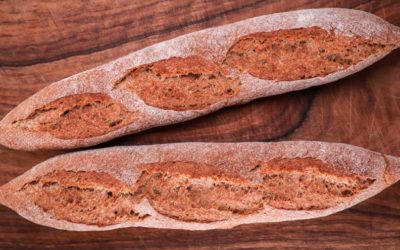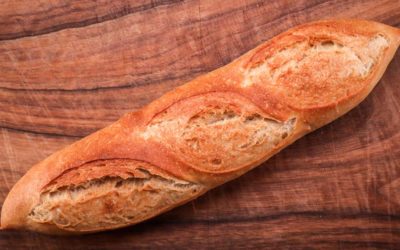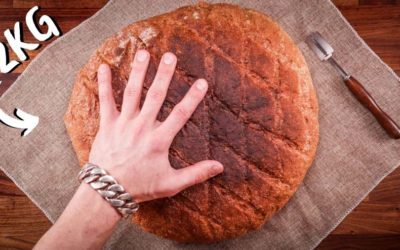Unlike most other breads this Tuscan bread contains no salt. But why would anyone make bread without salt?
Salt serves a couple of purposes in bread dough. It is used as seasoning the same way it would be used in cooking and it is also used for controlling fermentation because salt slows down yeast activity.
I have read a couple of theories of why Tuscan bread is made without salt. One being that Tuscan food can be quite rich, so an unsalted bread was eaten alongside it to balance out the flavours. The other theory says that Tuscan bakers made saltless bread because of the high cost of salt back in the old days. This bread is not bland at all. Because of the long fermentation it gains a lot of flavour.
Salt nowadays is affordable so why would you want to make this bread? If you like to make sandwiches with cured meats and various cheeses, then this bread is the perfect vessel for those toppings.
Another good reason to not use salt is to cut down on costs. While salt is affordable it is certainly not free. And since there is no salt in the dough to slow down fermentation a very tiny amount of yeast is needed. The cost of such a loaf basically comes down to the cost of the flour and the electricity.
Watch the video down below for detailed instructions.
Ingredients
For the biga –
50g (1.75oz) white bread flour
25g (0.9oz) water
0.1g (0.003oz) dry yeast
For the main dough –
230g (8.1oz) white bread flour
20g (0.7oz) whole wheat flour
170g (6oz) cold water
To learn more about dough temperature when using a preferment click here.
The flour I use has a protein content of 13%. If your flour is weaker, then you may need to lower the hydration.
If you are using active dry yeast, then you may need to let it sit in the water for 10 minutes before adding the other ingredients or else it could take a lot longer to raise the dough.
Method
- Make the biga. In a small bowl combine the water, yeast, and flour. Mix until there is no dry flour left. Cover and leave to ferment for 10 – 12 hours.
- Make the dough. Add the water to a large bowl. Tear the biga into pieces and drop it in the water. This will make it easier to mix. Add the whole wheat and white flours. Mix until there is no dry flour left.
- Tip the dough out on the table and knead for 5 minutes. *Desired dough temperature 25C (77F). If your dough is warmer, then it will ferment more rapidly. If it is cooler, then it will take longer. Adjust proofing time accordingly.
- Cover and ferment for 1.5 hours.
- Fold.
- Ferment for 1.5 hours.
- Pre-shape and leave to rest for 15 minutes.
- Final shaping.
- Final proof should take around 1 – 1.5 hours. *During the final hour of fermentation preheat your oven and baking vessel to 220C (430F) fan off.
- Invert the dough onto the pre-heated pan and score it with a razor or a knife.
- Bake with the lid on for 20 minutes.
- Remove the lid and bake for 15 minutes.
Enjoy with your favourite cold cuts and cheeses.
Keep in mind that the conditions in each kitchen are different, so fermentation times may vary for you. It is up to the baker to control the bread and react accordingly.
Your oven may be different too, so your baking time may vary.
Watch the video here



